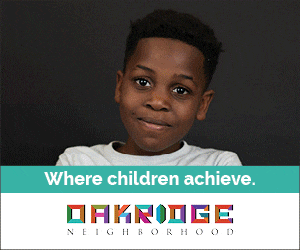Make Iowa a place to live in harmony

Our children will live in a world unrecognizable to our parents, and our first responsibility is to guarantee that they learn how to survive and prosper in their own time. The insights we instill today will determine the lives they lead tomorrow, and we are now positioned to create a lifestyle worthy of their amazing potential. Building on our heritage, values and strengths, Iowa can demonstrate how to live in peaceful harmony amid the challenging realities of the 21st century. Indeed, Iowa can lead the way.
Most issues are well known: environmental degradation, the impact of technology and globalization, population growth (or lack of it), fitness and health, workforce development, unrealistic entitlements, national debt. Others are less obvious, yet potentially just as troubling. Among these are the insulation from nature and isolation from each other brought about through the shifting mores and methods of so-called modern society.
In his book “Last Child in the Woods: Saving Our Children from the Nature-Deficit Disorder,” Richard Louv details the growing risks of detachment from our fellow man and the land that delivered us. He describes an insidious widening of multiple barriers between Americans, particularly children, and the natural world. In one generation, our cities, schools, neighborhoods, laws and leisure have disengaged from what always had been an intimate linkage with the real outdoors. He calls it a “nature deficit disorder”, and a majority of our nation’s population suffers from it. Moreover, the transition toward a technology-based bio-economy exacerbates this problem, yet is no fad. It is widely heralded, science-based, irreversible, and, perhaps surprisingly, consistent with human nature; yet still the losing touch accelerates. How can we incorporate useful technology and stay connected at the same time?
Fortunately, Iowans are still among America’s leaders in remembering and honoring the land. We have terrific trails, parks and programs, plus an agrarian ethos steeped in local culture and traditions. These are invaluable resources that now provide a unique moment of opportunity to affect nearly all these issues while building a state still in tune with ancient human needs. If we act in concert now, Iowa could become known as the place to live, work and play in touch with the real, natural world, the only way we used to live before computers came to rule. So, I recommend we adopt the movement Louv calls “no child left indoors”.
Imagine a group of independent educational attractions working together to coordinate complementary missions, messaging, marketing and fund raising. Imagine them all collaborating with professional educators to deliver their particular focused experiences within the broader message of life. Together they could tell the stories of ecology, conservation, restoration, sustainability, bioethics, cognition, nutrition, science, energy and growth. Imagine neighborhoods, towns, cities, schools, farms and businesses, all eventually de-signed and developed by adults nurtured within this overarching theme. Now imagine the impact such a reality and reputation would have on families living here, visitors coming here, businesses and workers relocating here. We would distinguish ourselves in a fashion worthy of wide emulation, admiration and respect.
This is not a withdrawal from technology. On the contrary, it is an appeal to use the best of technology to restore our rapidly deteriorating relationship with that which sustains us. As Ray Anderson, chairman of Interface Inc. and author of “Mid-Course Correction,” says, “The economy is the wholly owned subsidiary of the environment.” Most have lost this undeniable truth. Let Iowans be the people who find it, restore it, reveal it and rejoice in it.
Here in Central Iowa, we are blessed with several projects, old and new, already focused around various aspects of nature. Several are now discussing how to advance, while planning significant capital campaigns. A great next step would build on the model of The Audubon Institute of Louisiana. Let’s bring together the leaders of seven not-for-profit educational attractions around Central Iowa, roughly along and more fully utilizing the Des Moines and Raccoon rivers: the Science Center of Iowa, the Des Moines Botanical Center, Blank Park Zoo, Living History Farms, Great Ape Trust of Iowa, Earthpark at Lake Red Rock and the federally funded Neal Smith National Wildlife Refuge near Prairie City. If these institutions, each successful in its own right, voluntarily agreed to jointly design their next phases of growth and expansion within the broad environmental, educational framework presented here, the results would enthuse and inspire people near and far. It would declare to the world Iowa’s commitment to build a state where children learn to use technology rather than let it use them. It would attract quality citizens of every kind, color and mind to make their lives work in Iowa, simultaneously lifting tourism to proud, value based, lucrative new heights.
Humanity is at a crossroads. Iowa has a chance to help our children save their world. Let’s build a state together in tune with nature, led by science, driven by universal truths. This focused approach will let people learn by living a more natural life in preparation for their time in a new, unnatural world.
What could be better? Why not here? Why not now?
Ted Townsend is a leading proponent of and donor to the proposed Earthpark project near Pella. This piece is excerpted from a commencement address he delivered at Central College.







